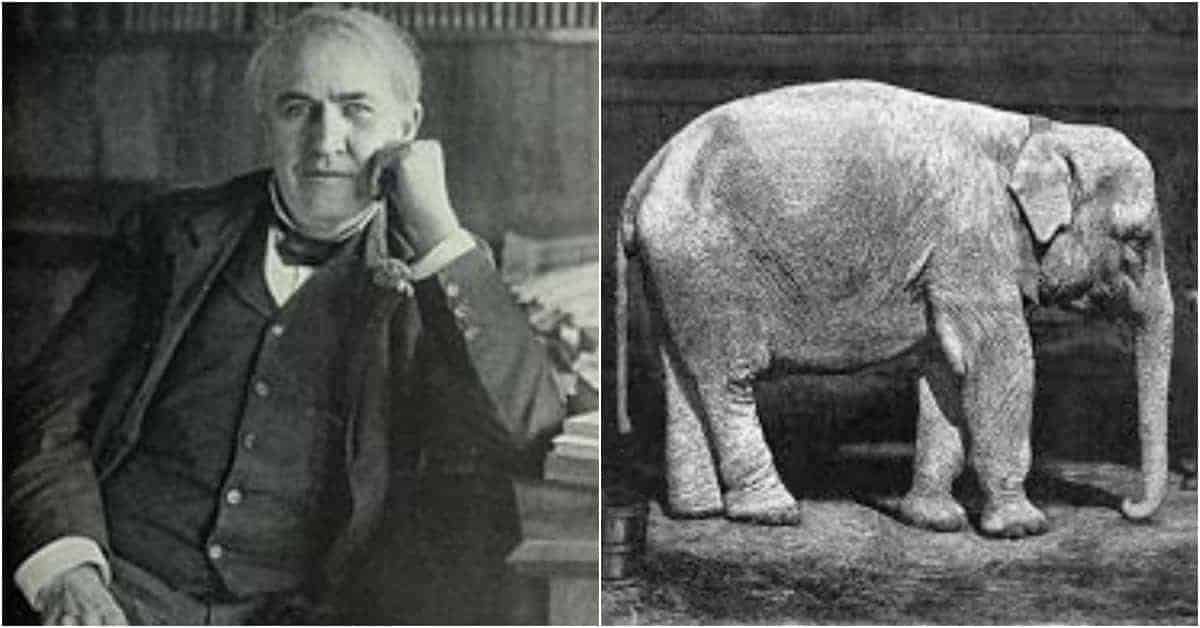If you’re a history buff, you may have heard the story of “Topsy” the Elephant. And the story you know probably goes something like this: Thomas Edison, trying to prove that his rival’s “alternating current” was more dangerous than his own form of “direct current,” arranged to electrocute an elephant with AC, proving how dangerous it was compared to DC. So poor Topsy, caught in the “War of the Currents” was electrocuted in front of a crowd of spectators to prove a point. It’s a good story, but the truth is slightly different.
While there was definitely a “War of the Currents” between famed inventors Nikolai Tesla, George Westinghouse, and Thomas Edison, and while Topsy definitely got electrocuted, there’s little evidence to suggest that Edison arranged the spectacle to prove his point. But there is still a lot of historical value in the story. It tells us a great deal about the early period of electricity. And the story of Topsy the Elephant also reflects the casual cruelty to animals that people practiced. So, what can we really learn from the sad fate of Topsy the elephant?
In the early 19th Century, the world didn’t rely on electricity the way it does today. Most works was performed by human or water-wheel power and people often went to bed as soon as the sun went down. Anyone who wanted to work or socialize into the night had to do so by candlelight. Of course, that all began to change with the invention of the lightbulb. And contrary to popular opinion, the lightbulb was not the work of Thomas Edison. Instead, electric lighting was invented by Englishman Humphrey Davy.

That’s not to make light of the work that Thomas Edison did in popularizing electric lights. Edison employed people whose work was invaluable in making lightbulbs practical and affordable for mass use. And while Edison didn’t invent the lightbulb, his work is one of the most significant reasons that electric lighting became as widespread as it is today. And that pattern, where Edison took an existing invention and refined it for mass use, defines much of his career. The practice of making inventions useful for everyone also allowed Edison to position his company at the front of the market.
The influence of Edison’s company, the Edison Illuminating Company, is perhaps most obvious when it comes to electricity. With the first practical light bulb and the infrastructure to extend electric power across the nation, Edison was able to establish something close to a monopoly on electricity. But as with all monopolies, competitors soon emerged to challenge Edison for a share of the market. In response, Edison quickly moved to do whatever he could to discredit and eliminate these competitors. This competition between Edison and the rival electric companies led to the birth of what we today call “the War of the Currents.”

